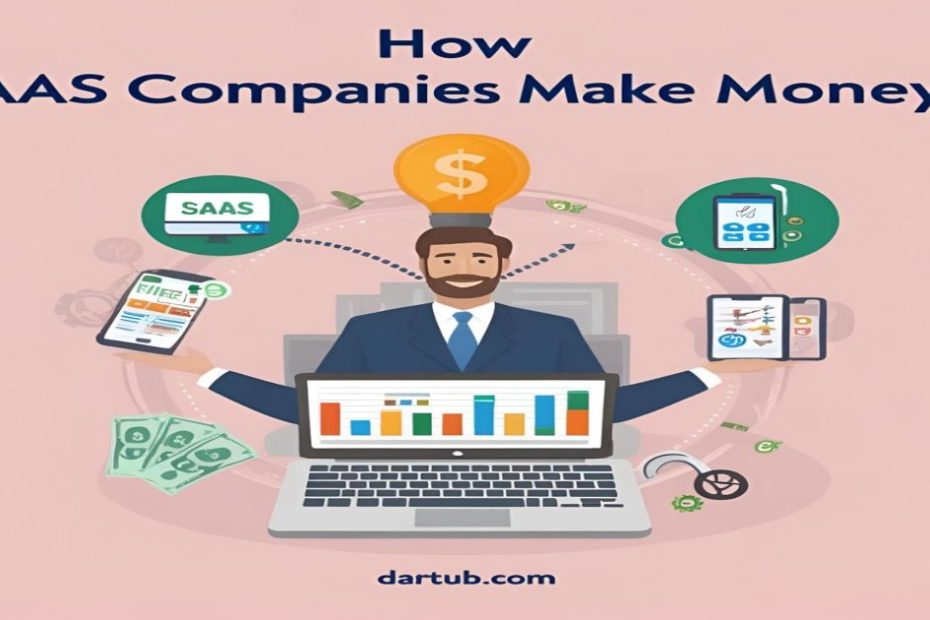Introduction
The SaaS (Software as a Service) industry has exploded over the past decade and continues to grow rapidly in 2025. From startups to enterprise-level solutions, SaaS companies have changed how businesses and individuals access, pay for, and use software. But one question often asked is: How do SaaS companies actually make money?
This comprehensive guide will break down the SaaS business model, reveal the primary revenue streams, and highlight key strategies SaaS companies use to scale and profit. Whether you’re an entrepreneur, investor, or just curious about the industry, this article provides everything you need to understand the economics behind SaaS.
Table of Contents
- What is a SaaS Business Model?
- Core Revenue Streams of SaaS Companies
- Subscription-Based Pricing
- Freemium Model
- Tiered Pricing Plans
- Usage-Based Pricing
- Affiliate and Partner Programs
- How SaaS Companies Acquire Customers
- Retention and Upselling Strategies
- Key Metrics That Drive SaaS Profitability
- MRR, ARR, CAC, CLTV
- How SaaS Companies Control Costs
- Examples of Successful SaaS Companies
- Challenges SaaS Companies Face
- Final Thoughts: Why the SaaS Model Works
- Meta Description
- Target Keywords
- Blog Tags
What is a SaaS Business Model?
A SaaS business model delivers software to customers via the internet. Users typically subscribe to the software on a monthly or annual basis, and the provider manages updates, servers, and customer support. Instead of purchasing software outright, customers access it on-demand.
This model offers predictable, recurring revenue and is favored for its scalability and lower upfront costs for both providers and customers.
Core Revenue Streams of SaaS Companies
1. Subscription-Based Pricing
This is the most common revenue model. Users pay a recurring fee (monthly or yearly) to access the software. Pricing is often based on:
- Number of users or seats
- Level of features or services
- Storage capacity or usage
Example: Zoom charges different prices for Pro, Business, and Enterprise plans.
2. Freemium Model
Many SaaS platforms offer a free version with limited features to attract users. Once users see the value, they are encouraged to upgrade to paid plans.
Pros: Great for user acquisition.
Cons: Low conversion rates unless paired with strong upsell strategies.
3. Tiered Pricing Plans
Different pricing tiers are designed for different user types—from individuals and small teams to enterprises. This allows SaaS companies to capture value from a wide range of users.
4. Usage-Based Pricing
Also known as pay-as-you-go pricing, customers are charged based on actual usage.
Examples: AWS, Twilio, and Stripe use this model.
5. Affiliate and Partner Programs
SaaS companies often pay commissions to affiliates or partners who refer paying customers. This performance-based model helps with growth without upfront advertising costs.
How SaaS Companies Acquire Customers
Digital Marketing
- SEO and Content Marketing
- Paid Ads (Google Ads, Facebook, LinkedIn)
- Email Campaigns
Sales Teams
- Inbound Sales: Reaching out to leads from marketing efforts
- Outbound Sales: Cold outreach and enterprise sales tactics
Product-Led Growth (PLG)
The product itself drives user acquisition—think of how Slack or Dropbox grow as users invite others.
Free Trials
A risk-free way to attract customers and convert them after a set trial period.
Retention and Upselling Strategies
Customer Support and Success Teams
Keeping customers happy reduces churn.
In-App Messaging and Tutorials
Educate users on features to increase usage and satisfaction.
Feature Updates and Improvements
Continual product enhancements keep customers engaged and satisfied.
Upselling and Cross-Selling
- Offer advanced features or integrations for a higher tier
- Bundle other services or complementary tools
Key Metrics That Drive SaaS Profitability
MRR (Monthly Recurring Revenue)
A core metric showing predictable revenue month-over-month.
ARR (Annual Recurring Revenue)
A long-term view of company performance.
CAC (Customer Acquisition Cost)
How much it costs to acquire a new customer.
CLTV (Customer Lifetime Value)
The total revenue expected from a single customer throughout their lifecycle.
Formula: CLTV should be at least 3x CAC for sustainable growth.
How SaaS Companies Control Costs
- Cloud Infrastructure: Scalable and cost-efficient hosting
- Remote Teams: Reduce office space and fixed costs
- Automation Tools: Use of AI, CRMs, and analytics to streamline operations
Examples of Successful SaaS Companies
- HubSpot: Marketing, sales, and CRM SaaS tool
- Shopify: E-commerce software for businesses
- Notion: Collaboration and note-taking SaaS
- Salesforce: One of the largest SaaS CRM platforms
These companies succeed due to strong brand positioning, exceptional customer service, and high-value offerings.
Challenges SaaS Companies Face
- High Competition: Many players in each niche
- Churn Rate: Losing subscribers can hinder growth
- Customer Support Load: Needs to scale with user base
- Security & Compliance: Protecting user data is critical
Final Thoughts: Why the SaaS Model Works
The SaaS model thrives because of its scalability, predictability, and ability to serve both individuals and enterprises. As digital transformation accelerates in 2025, more businesses will adopt SaaS tools to enhance productivity, marketing, communication, and customer support.
If executed properly, a SaaS business can grow rapidly with high margins and long-term customer loyalty.
